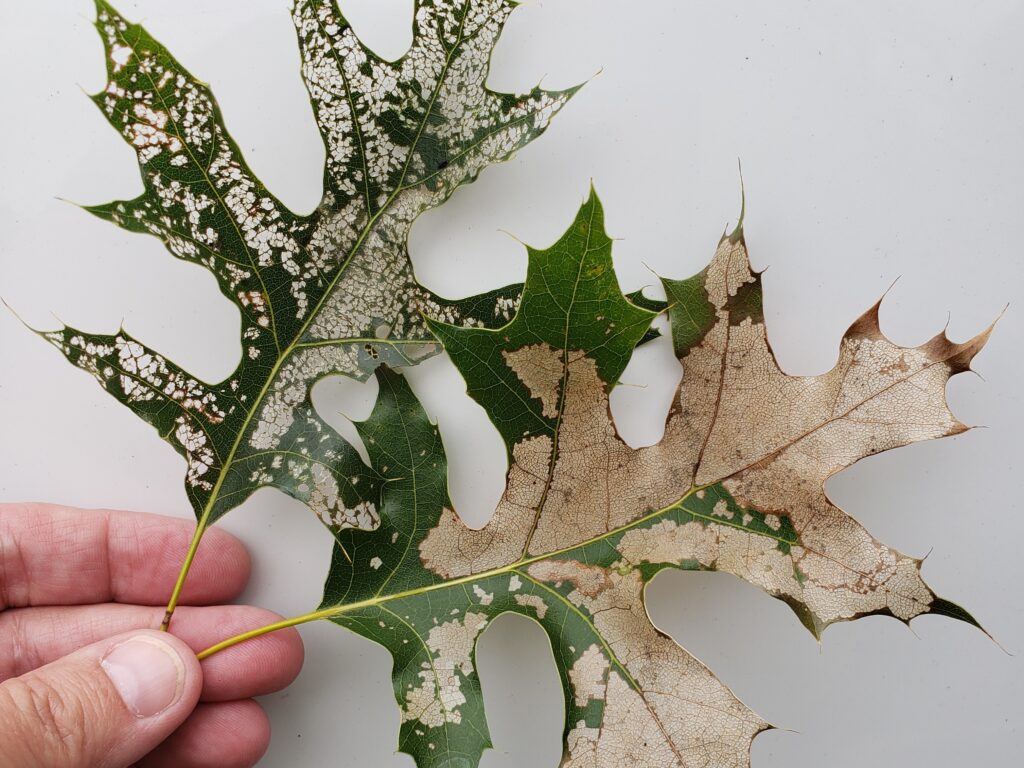Article By: Linda Williams, DNR Forest Health Specialist, Woodruff
Linda.Williams@wisconsin.gov or 920-360-0665
The oak slug sawfly (Caliroa quercuscoccineae), sometimes called the scarlet oak sawfly, has the appearance of a small, slimy slug. Its slime helps it stick to leaves it feeds on. The oak slug sawfly’s tiny larvae feed in groups on the undersides of oak leaves, scraping out the green material from between the veins of the leaves. The upper leaf surface is usually left intact, creating a “stained glass window” look. Oak slug sawfly has the ability to completely defoliate leaves before dropping to the ground to pupate.

Oak slug sawfly larvae cause defoliation on oak leaf after feeding.
Photo Credit: Wisconsin DNR
In 2019, noticeable defoliation appeared on a few oak trees approximately 20 feet tall or less. In 2020, there was also significant defoliation in the tops of oaks this size. Oak defoliation has been spotted this year as well. At this time, oak defoliation does not appear to be as widespread as what was noted in 2020. However, a killing frost has not yet occurred, and the sawflies have not yet pupated (as of late September 2021), so more damage may begin to appear.
Though the oak slug sawfly can cause damage, it is not considered a threat to oak trees or forests. If you want to control this insect using chemical means, use a general insecticide and spray the undersides of the leaves where the larvae are feeding.

Oak slug sawfly larvae cause defoliation across a section of an oak tree.
Photo Credit: Wisconsin DNR
